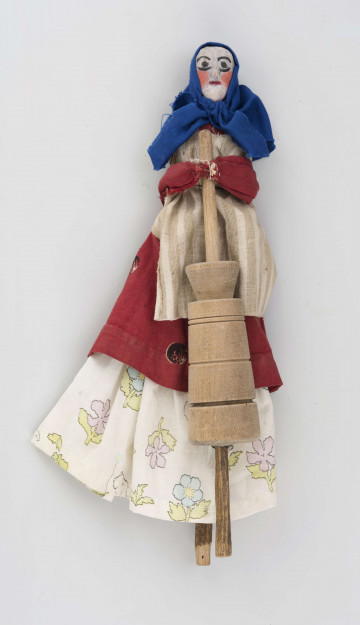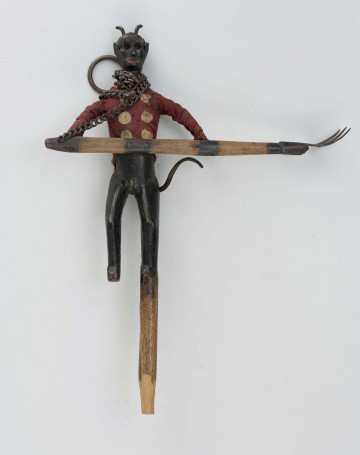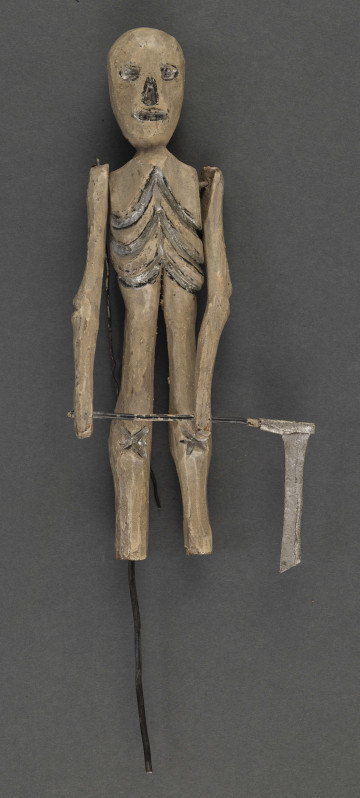
‘Witch’ puppet from the Nativity scene
1901 — 1920
National Museum in Lublin
Part of the collection: Folk craft of the Lublin Region (19th/20th c.)
In the tradition of the people, Christmas Eve and Christmas Day were spent in a festive mood with the closest family. No visits were made or received. It was not until St Stephen's Day (26 December) that the period of games, meetings and parties started. The visits began, and the first festive guests, including carol singers with nativity scenes, appeared in homes.
From the middle of the 18th century, when in 1736 the Bishop of Poznań, Teodor Czartoryski, followed by other Polish bishops, out of concern for the solemnity of churches forbade nativity scenes in church, allowing only crèches and immovable figures, folk nativity scenes began to spread. It did not catch on in the whole of Poland, appearing mainly in the areas of the Russian and Austrian partition. The most interesting were nativity scenes with movable puppets, with the participation of carol singers who performed nativity plays. The puppets were usually 20-25 cm high, carved from wood, wrapped in cloth or dressed in very carefully sewn and decorated costumes. Made of rags on a wooden or wire skeleton, they sometimes had the heads of factory dolls. Pieces of thin sheet metal or foil, scraps of fur and leather, and tarpaulin were used as well. Wooden heads of dolls were sometimes worked out in various ways, from clumsily carved block with simplified facial features drawn with crayon or paint to almost portrait-like studies (see: 16914/ML).
Cribs and puppets were made by cribbage makers or groups of children or adults intending to carol. In the cities, these were students and young journeymen, and in the countryside, farmhands and boys from the poorest families, who could expect handouts and refreshments in return for performing the nativity. The puppet sets, made at different times by many authors of greater or lesser artistic talent, were not always uniform. However, they consistently provided entertainment and enjoyment for young and old (see E/319/ML, E/16911/ML).
Author / creator
Dimensions
cały obiekt: height: 19,5 cm
Object type
puppet
Technique
own
Material
wood, metal, paint
Creation time / dating
Creation / finding place
Owner
The National Museum in Lublin
Identification number
Location / status

1901 — 1920
National Museum in Lublin

1901 — 1920
National Museum in Lublin

1901 — 1920
National Museum in Lublin
DISCOVER this TOPIC
Castle Museum in Łańcut
DISCOVER this PATH
Educational path